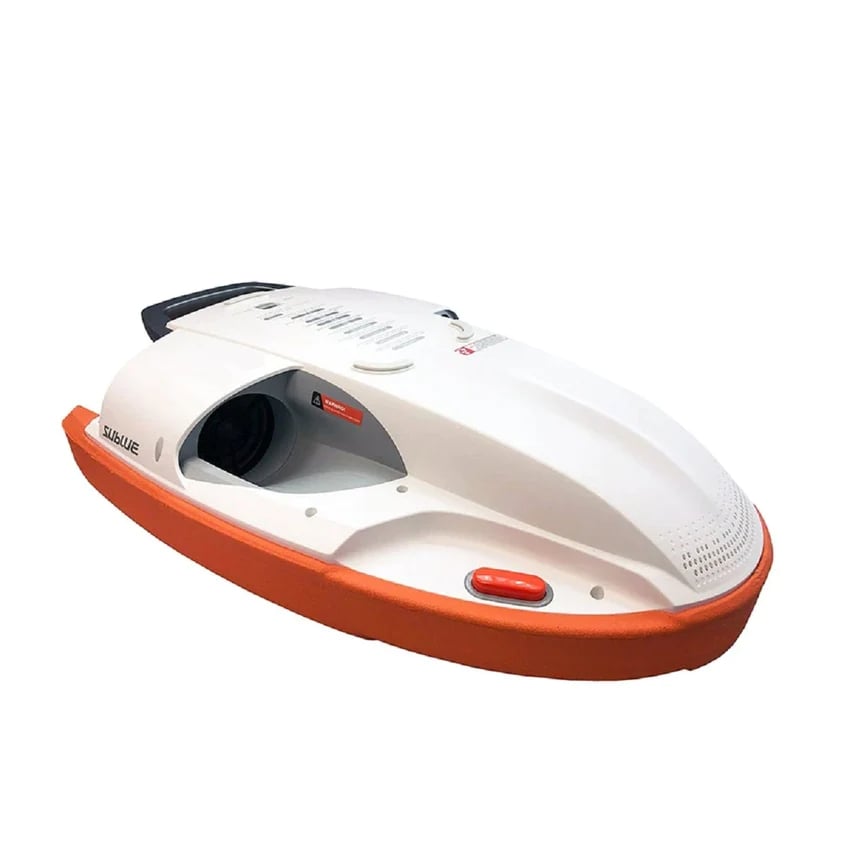![20210706_diving_1240x531[1].jpg](https://api.fortress.com.hk/medias/20210706-diving-1240x531-1-.jpg?context=bWFzdGVyfGltYWdlc3w3MzYwMTd8aW1hZ2UvanBlZ3xhREV5TDJnMk1DOHhNREE0TURBM09ETTVOelEzTUM4eU1ESXhNRGN3Tmw5a2FYWnBibWRmTVRJME1IZzFNekZiTVYwdWFuQm58YmZjOTIwOTZjOTlmMmMyZjFhYjdkZmNjNmNmNjQ1ZDUyODNkYTlhYTk1ZTljMzIzYzczMjRjN2E4Zjg1ZmYzMA)

2025 Popular Summer Outdoor (Diving & Swimming) Shopping Guide & Recommendation
Summer has arrived. So it’s time to leave your air-conditioned surroundings and plan a trip to the beach with a group of friends. Better still, try some water sports. Diving, snorkelling and swimming are easy to get into and a lot of fun. Check out our shopping guide for the best gear for these activities from Atomic Aquatics , Audaxpro , OCEAN REEF , Sublue and more.
Basic Equipment for Diving and Snorkelling
You don’t need much. Generally, a mask, a snorkel, and flippers will do. Swimmers can choose whatever they need to complement their training programmes. There is also other equipment designed for different water activities. Check them out below:
1. Goggles
Choose according to the shape of your face. Get one that fits snugly to ensure it is airtight and avoid fogging. Googles are divided into 2 main types:
Single-lens: As the name suggests, single-lens googles are made from a single lens which is usually not replaceable. The googles are like a floor-to-ceiling glass window. With no frame to restrict the view, you can enjoy the underwater world more fully.
Double lenses: Consists of two lenses connected to a frame which are replaceable. These are ideal for swimmers who use corrective lenses for nearsightedness or farsightedness.
2. Breathing tubes
"Breathing in and out" smoothly and easily is important to learn when you start diving or doing water sports. Divers need to use a breathing tube to ensure they can breathe underwater. But when learning to swim or in water training, a snorkel can help you breathe more easily so you can focus on perfecting your swimming stroke.
When choosing a snorkel, consider your breathing capacity, usage and whether it can be used with goggles. A snorkel consists of a tube and a mouthpiece. There are three types of snorkels depending on function and design.
Full-dry: Comes with a waterproof valve and drain valve to make sure no water drips into the tube. The full-face mask which includes a mask and snorkel is also a full-dry snorkel. It has a highly watertight capacity, but is heavier and only suitable for snorkelling in shallow waters. Beginner swimmers or divers who are not good at breathing from the mouth are advised to choose a full-dry snorkel to reduce the chance of choking during activities.
Semi-dry: Comes with a drain valve designed to direct most of the water droplets out of the snorkel. You can also blow the water out. Ideal for snorkelling, scuba diving and other swimming activities as it prevents water from accumulating in the tube and ensures that the user can breathe easily. Suitable for use during snorkelling, scuba diving and swimming activities.
Wet: The wet snorkel is the simplest in design and has no valve. Once the water enters the tube, it needs to be blown out vigorously. Because it is the most difficult to use, only experienced divers or freestyle divers choose wet snorkels.
3. Flippers
The longer the flippers, the stronger the thrust and the less physical exertion is required. However, that it does not mean that longer flippers are always better as there is no one pair of flippers that is suitable for all activities. Choose your flippers according to your actual needs and personal preferences.
Flipper length: Choose a length that suits your activity. Choose a short, lightweight model for swimming and snorkelling, or a longer model for scuba diving and freediving.
Flipper styles: Flippers are designed as either over-the-foot or adjustable. The former can be used barefoot or with diving socks, the latter requires diving boots.
Advanced Equipment for Diving and Snorkelling
Scuba diving requires a wetsuit, buoyancy vest, rebreather, air bottle and diving watch in addition to basic equipment. Beginners can rent these, but diving enthusiasts may wish to purchase their own equipment as that may be safer, more hygienic, and more suitable for their own body shape and personal needs. Here is a summary of what’s available at Fortress.
1. Electric floating boards/underwater propellers
Use an electric floatie or underwater thruster for diving or swimming. This equipment helps you to move at a faster pace through the ocean with less physical exertion. Some models can be used with waterproof sports cameras to capture first-view images underwater to document the journey. Children and beginner swimmers can also use these to aid their training session and to swim with ease.
2. Buoyancy vests
Scuba divers can use these vests to adjust their buoyancy to ascend, dive or maintain a certain depth more comfortably. They are available in different sizes. Whether you are buying or renting a vest, choose according to your body type and weight. Some vests come with glow-in-the-dark designs for added safety.
3. Smart diving watches
Unlike land-based sports, scuba diving involves a lot of equipment. A diving watch is designed to give you data on this equipment. Use it to record each diving trip with GPS, monitor the consumption of air from your oxygen tank, residual pressure, remaining gas time and even the residual pressure of your diving buddy. Diving watches are made of sophisticated materials and are resistant to water pressure, shock and sea salt corrosion and are considered very high-quality watches.
4. Dive drones / sports cameras / dive cases
Many people like to use a camera to take pictures and record their underwater exploits. If you have the budget, choose a drone or underwater robot to capture professional-grade underwater images. Handhelds and sports cameras are great for underwater photography, but you need to equip them with diving cases to avoid damage to the equipment from deep water pressure.
Popular equipment recommendations
| Key Features | Product |
|---|---|
|
 |
|
 |
|
 |
|
 |

